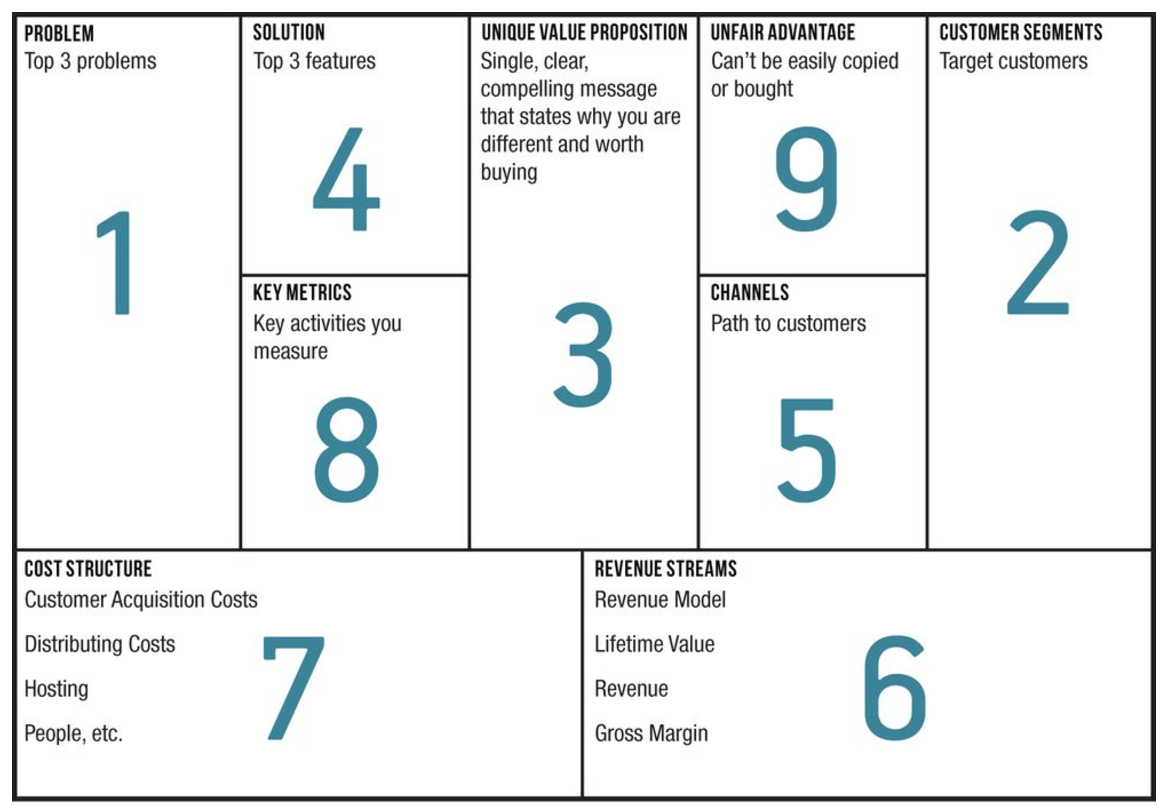Written by Craig
February 10, 2023

A business model describes how you create, deliver, and capture value (get paid) from customers. ~Saul Kaplan
Deconstructing an idea for a product or business is a crucial step in the development process. By breaking down the concept into its core components, you can gain a deeper understanding of what makes your idea unique and valuable. One tool that can be especially useful in this process is the Lean Canvas, a method developed by Ash Maurya in his book “Running Lean.” We will explore the key elements of the Lean Canvas and how you can use it to deconstruct your idea.
Lean Canvas consists of 9 boxes. Let’s take a look at each one of them:
- Problem: Identify the problem that your product or service is meant to solve.
- Customer Segments: Define your target market and the specific groups of customers you are trying to reach.
- Unique Value Proposition: Explain what makes your product or service unique and why your target market should choose it over other options.
- Solutions: Outline the specific solutions your product or service provides to address the problem identified in the problem component.
- Channels: Describe the different channels through which you will reach your customers, such as social media, email marketing, or content marketing.
- Revenue Streams: Outline the various sources of revenue that your product or service generates, such as product sales, subscriptions, or advertising.
- Cost Structure: Identify the costs associated with creating, marketing, and distributing your product or service.
- Key Metrics: Define the key metrics you will use to measure the success of your product or service, such as customer acquisition cost, lifetime value, or churn rate.
- Unfair Advantage: Explain why your product or service is more likely to succeed than similar offerings from competitors, such as proprietary technology, a large network of partners, or a unique business model.
By filling out each of these components on a Lean Canvas, you can gain a comprehensive understanding of your idea
and identify any potential areas of weakness. For example, if you struggle to define your unique value proposition, this may indicate that your idea is not as differentiated as you had initially thought. On the other hand, if you have a strong unfair advantage, such as a large network of partners, this can be a source of strength that you can leverage to gain a competitive advantage.
One of the benefits of the Lean Canvas is that it provides a visual representation of your idea
making it easier to understand and communicate with others. This can be particularly useful when working with a team or seeking feedback from others. Additionally, the Lean Canvas can help you identify areas where you need to focus your efforts, such as developing your unique value proposition or finding more efficient channels for reaching your customers.
In conclusion, the Lean Canvas is a powerful tool for deconstructing an idea for a product or business. By breaking down your idea into its core components and gaining a deeper understanding of each of these elements, you can gain insights that can help you improve your idea and increase the likelihood of success. So if you’re looking to bring your idea to life, consider using the Lean Canvas to give it the structure and clarity it needs to succeed.

0 Comments